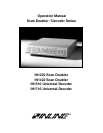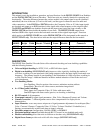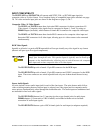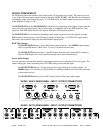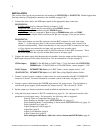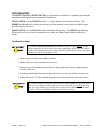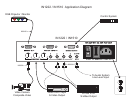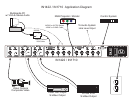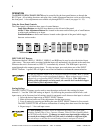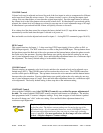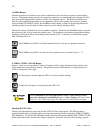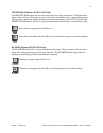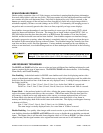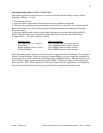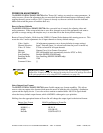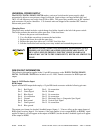
1
©1994 - INLINE, INC. IN1222 / IN1422 / IN1510 / IN1710 OPERATIONS MANUAL - REV. 2 12/04/99
INTRODUCTION
This manual covers the installation, operation, and specifications for the IN1222 / IN1422 Scan Doublers
and the IN1510 / IN1710 Universal Decoders. These four units are virtually identical in operation and
functionality. The main difference between the various models is the output signal scan rate (doubled /
undoubled), the size of the case (1/2 rack or full rack), and the type of connectors used for audio and
video connections. In the IN1510 and IN1710 decoders, the Composite Video or S-Video input signals
are decoded and output as an RGB interlaced video signal at the same frequency as the original signal.
The IN1222 and IN1422 scan doublers first decode the input signal (using the same circuitry as the
IN1510 / IN1710) and then double the number of scan lines. The IN1222 / IN1422 output a non-
interlaced RGB video signal at twice the horizontal scan rate of the original input signal. Functions
which apply to the IN1222 / IN1422 but not the IN1510 / IN1710 will be designated in this manual as
IN1222 / IN1422 only. The chart below indicates the major differences between the four models.
MODEL
Size
Height Width
Output
Decode / Double
Freeze
Frame
Video
Blankin
Input / Output
Connectors
IN1222
1U 1/2 Rack X X X Compact Connectors / Adapters
IN1422
1U Full Rack X X X Full Professional Connectors
IN1510
1U 1/2 Rack X X Compact Connectors / Adapters
IN1710
1U Full Rack X X Full Professional Connectors
DESCRIPTION
The INLINE Scan Doubler / Decoder Series offers advanced decoding and scan doubling capabilities
with the following features:
♦ Universal digital decoding for NTSC, PAL, or SECAM video signals
♦ Digital scan doubling (IN1222/IN1422 only) improves video signals by doubling the number of
scan lines, resulting in a non-interlaced video image output at twice the input signal’s horizontal scan
frequency. The primary benefit of scan doubling is the elimination of visible scan lines, resulting in
a solid, film-like image. Additional benefits include a marked reduction of line flicker and cross-
color interference.
♦ Two Doubling Modes :
Line Doubling - Best for motion video sources, minimizes motion artifacts.
Frame Mode - Best for still video sources, maximizes image detail.
♦ 4 x 1 Video/Audio Switching:
Three inputs for Composite Video / S-Video with stereo audio
One RGB input with stereo audio (passive, no decoding or doubling)
♦ RS-232 control of all parameters
♦ Front panel controls to adjust signal parameters - Hue, Color, Sharpness/Contrast, and Volume.
♦ Gamma Correction - 7 different gamma curves allow compensation for display device
characteristics
♦ Input Memories - users may store a unique set of signal parameter adjustments for each input (Hue /
Color / Contrast / Gamma / Composite Video / S-Video / Volume / Doubled / Undoubled, etc.).
Settings are automatically recalled each time an input is selected
♦ Selectable output sync configuration: RsGsBs, RGBS, or RGBH&V
♦ Horizontal position control (available through RS-232 control in non-doubled mode only)
♦ Disable scan doubling allows the units to function as decoders only (IN1222/IN1422 only).
♦ Digital freeze frame provides rock-solid still video images (IN1222/IN1422 only).



